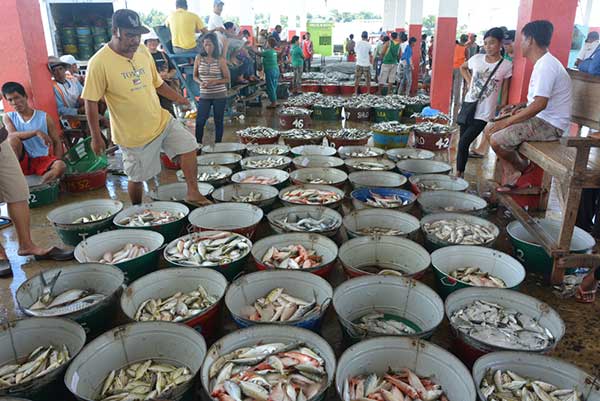
By Rjay Zuriaga Castor
The Bureau of Fisheries and Aquatic Resources in Western Visayas (BFAR-6) attributed the significant decline in the region’s fisheries production in 2023 to a series of natural calamities.
The Philippine Statistics Authority (PSA) reported that Western Visayas’ total fisheries production in 2023 was estimated at 325,011.2 metric tons (MT), a reduction of 10,317.2 MT from the previous year.
BFAR-6 Director Remia Aparri explained that the drop in production was primarily caused by typhoons and other natural disasters that struck the region in 2023, as well as lingering effects from similar events in 2022.
“The decline was due to typhoons that ravaged the region in 2023 and the residual impact of natural calamities in 2022,” Aparri said on Friday.
In 2023, the region experienced heavy rains and flooding brought by the enhanced southwest monsoon and several weather disturbances, including Typhoons Betty, Goring, Jenny, and Egay.
Aparri noted that these weather events severely affected both the aquaculture sector and capture fisheries, particularly in Iloilo province.
Despite the decline, Aparri emphasized that Western Visayas still ranked third in fisheries production nationwide, following the Bangsamoro Autonomous Region in Muslim Mindanao (BARMM) and MIMAROPA.
She also highlighted that the region achieved a fish-sufficiency rate of 114 percent in the previous year, producing 255 MT of food fish.
This output not only met local demand but also created a surplus for neighboring regions.
BFAR-6 data revealed that around 6.5 million people in the region consume an average of 34.27 kg of fish per year.
Aparri explained that to meet this demand, the region requires a total of 224 MT of fisheries products annually.
PSA data showed that the 2023 decrease in fisheries production was primarily driven by declines in the commercial and municipal fisheries subsectors, which saw reductions of 4.7 percent and 13.7 percent, respectively.
Aquaculture, however, saw a 5.8 percent increase, contributing 48 percent of the total fisheries production, amounting to 156,855 MT.
Municipal fisheries accounted for 30 percent of the output (96,741 MT), while commercial fisheries contributed the remaining 22 percent (71,415 MT).


















